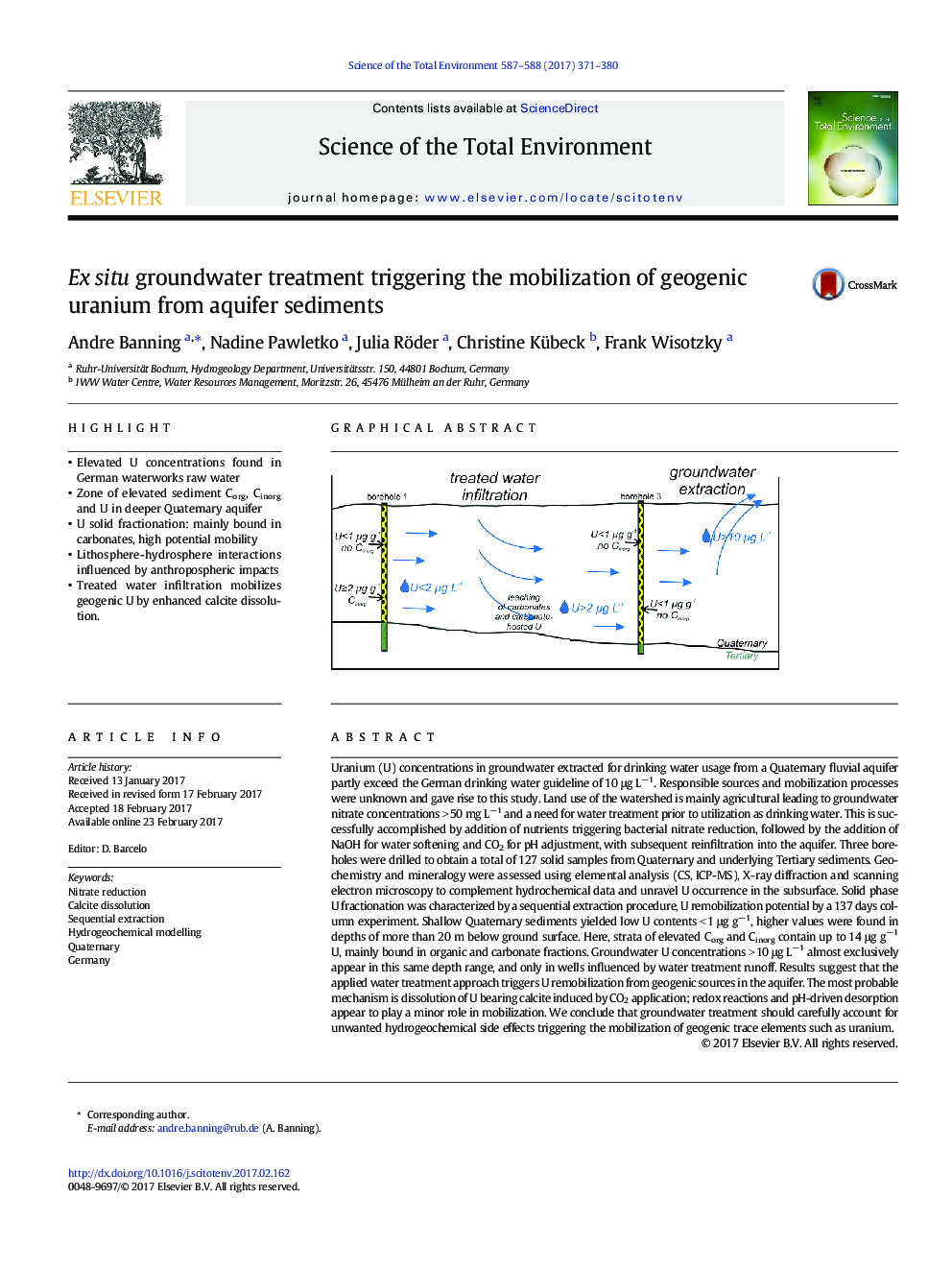| Article ID | Journal | Published Year | Pages | File Type |
|---|---|---|---|---|
| 5751593 | Science of The Total Environment | 2017 | 10 Pages |
Highlightâ¢Elevated U concentrations found in German waterworks raw waterâ¢Zone of elevated sediment Corg, Cinorg and U in deeper Quaternary aquiferâ¢U solid fractionation: mainly bound in carbonates, high potential mobilityâ¢Lithosphere-hydrosphere interactions influenced by anthropospheric impactsâ¢Treated water infiltration mobilizes geogenic U by enhanced calcite dissolution.
Uranium (U) concentrations in groundwater extracted for drinking water usage from a Quaternary fluvial aquifer partly exceed the German drinking water guideline of 10 μg Lâ1. Responsible sources and mobilization processes were unknown and gave rise to this study. Land use of the watershed is mainly agricultural leading to groundwater nitrate concentrations > 50 mg Lâ1 and a need for water treatment prior to utilization as drinking water. This is successfully accomplished by addition of nutrients triggering bacterial nitrate reduction, followed by the addition of NaOH for water softening and CO2 for pH adjustment, with subsequent reinfiltration into the aquifer. Three boreholes were drilled to obtain a total of 127 solid samples from Quaternary and underlying Tertiary sediments. Geochemistry and mineralogy were assessed using elemental analysis (CS, ICP-MS), X-ray diffraction and scanning electron microscopy to complement hydrochemical data and unravel U occurrence in the subsurface. Solid phase U fractionation was characterized by a sequential extraction procedure, U remobilization potential by a 137 days column experiment. Shallow Quaternary sediments yielded low U contents < 1 μg gâ1, higher values were found in depths of more than 20 m below ground surface. Here, strata of elevated Corg and Cinorg contain up to 14 μg gâ1 U, mainly bound in organic and carbonate fractions. Groundwater U concentrations > 10 μg Lâ1 almost exclusively appear in this same depth range, and only in wells influenced by water treatment runoff. Results suggest that the applied water treatment approach triggers U remobilization from geogenic sources in the aquifer. The most probable mechanism is dissolution of U bearing calcite induced by CO2 application; redox reactions and pH-driven desorption appear to play a minor role in mobilization. We conclude that groundwater treatment should carefully account for unwanted hydrogeochemical side effects triggering the mobilization of geogenic trace elements such as uranium.
Graphical abstractDownload high-res image (227KB)Download full-size image
